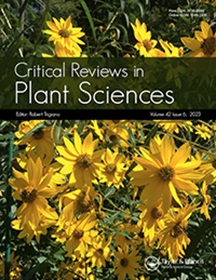裸子植物中与胚珠保护和种子传播相关的肉质结构:系统和进化综述
IF 6
2区 生物学
Q1 PLANT SCIENCES
引用次数: 10
摘要
在裸子植物的进化过程中,与胚珠/种子相关的肉质结构独立产生了几次。肉质结构与胚珠/种子的保护和传播有关,并且存在于现存裸子植物的所有四个谱系中。肉质结构的个体发生起源可能不同,从红豆杉(Taxus baccata)的假种胚珠珠柄、银杏(Ginkgo biloba)的胚珠珠被到麻黄(Ephedra)的修饰苞片不等。这种个体发生的可变性反映在这些组织在不同物种中显示的形态和特征上。本文综述了裸子植物胚珠/种子相关的肉质结构,并对每个属进行了详细的描述。这些独立进化的结构的进化至今仍不清楚,人们提出了不同的假设——保护种子,保护干燥——每一个都看似合理,但没有人能够解释它们所有的独立起源。我们的目的是在不同的观点(形态学、进化、基因参与)下对这些肉质结构进行广泛的讨论,以促进其在生态和分子水平上的起源和进化的进一步研究。本文章由计算机程序翻译,如有差异,请以英文原文为准。
Fleshy Structures Associated with Ovule Protection and Seed Dispersal in Gymnosperms: A Systematic and Evolutionary Overview
Abstract Fleshy structures associated with the ovule/seed arose independently several times during gymnosperm evolution. Fleshy structures are linked to ovule/seed protection and dispersal, and are present in all the four lineages of extant gymnosperms. The ontogenetic origin of the fleshy structures could be different, and spans from the ovule funiculus in the Taxus baccata aril, the ovule integument in Ginkgo biloba, to modified bracts as in case of Ephedra species. This variability in ontogeny is reflected in the morphology and characteristics that these tissues display among the different species. This review aims to provide a complete overview of these ovule/seed-associated fleshy structures in living gymnosperms, reporting detailed descriptions for every genus. The evolution of these independently evolved structures is still unclear, and different hypotheses have been presented—protection for the seeds, protection to desiccation—each plausible but no one able to account for all their independent origins. Our purpose is to offer an extensive discussion on these fleshy structures, under different points of view (morphology, evolution, gene involvement), to stimulate further studies on their origin and evolution on both ecological and molecular levels.
求助全文
通过发布文献求助,成功后即可免费获取论文全文。
去求助
来源期刊
CiteScore
12.90
自引率
1.40%
发文量
15
审稿时长
>12 weeks
期刊介绍:
Critical Reviews in Plant Sciences focuses on presenting in-depth and up-to-date reviews of timely and/or cutting-edge subjects in the broad discipline of plant science, ranging from molecular biology/biochemistry through the areas of cell biology, plant pathology and physiology, genetics, classical botany, and ecology, to practical agricultural applications. Articles in the journal provide an up-to-date literature base for researchers and students, pointing the way towards future research needs. The journal is also a significant source of credible, objective information to aid decision makers at all levels.

 求助内容:
求助内容: 应助结果提醒方式:
应助结果提醒方式:


